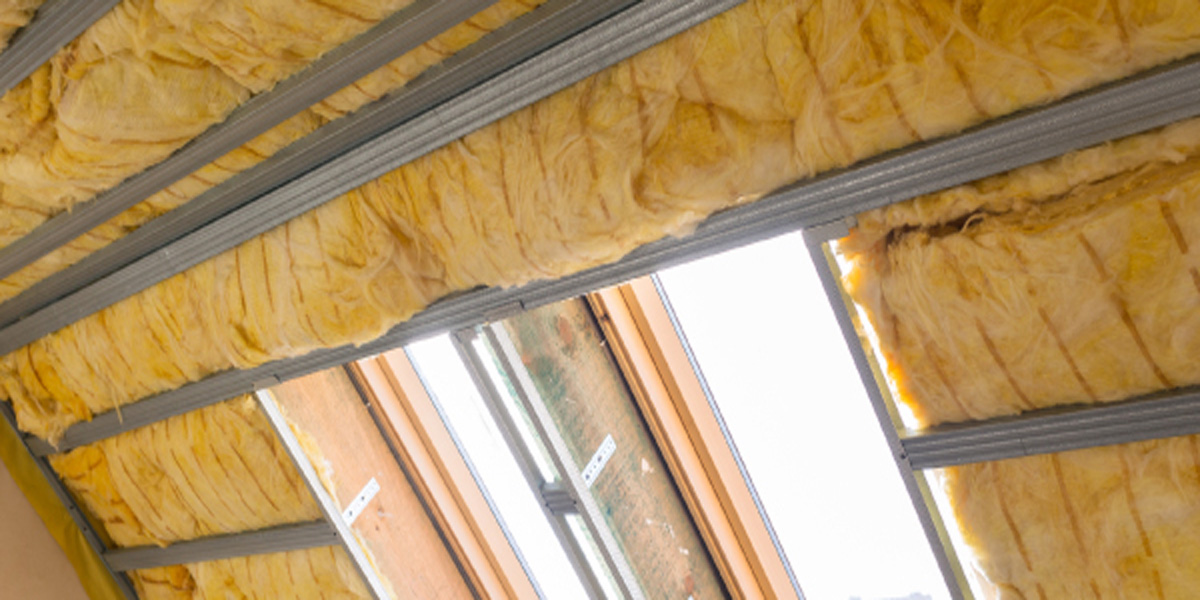Installing loft insulation is a fundamental step towards improving energy...
Read More- Benefit from 0% VAT on Installation
Flat Roof Insulation Grants
Flat roof insulation grants in the UK help improve energy efficiency by insulating flat roofs. These grants cover installation costs, reduce heat loss, lower heating bills, and enhance comfort for eligible households, supporting sustainable and energy-efficient living conditions.
How Do Heating Insulation Grants Work?
Eligible households can receive heating grant funding, such as GBIS and ECO4, for different home insulation measures. These grants help improve energy efficiency by providing financial support for insulation upgrades, making homes warmer and reducing energy costs.

Eligibility Requirements
Grants are available to households that meet specific income and property criteria.

Application Process
Apply online or through a designated agency to check your eligibility.

Types of Insulation
Grants cover loft, cavity wall, and solid wall insulation measures.

Benefits of Insulation
Insulation reduces energy bills and improves home comfort.
What is flat roof insulation?
Flat roof insulation is designed to enhance the energy efficiency of properties that lack a traditional loft or roof space. A roof is classified as ‘flat’ if it has a pitch of less than 10 degrees. Adding insulation to a flat roof can significantly reduce heat loss, minimize condensation issues, and lower heating bills. The primary goal is to create a thermal barrier that helps maintain a consistent indoor temperature, making the building more comfortable and energy-efficient.
There are two main methods for insulating a flat roof: warm roof insulation and cold roof insulation. Warm roof insulation involves placing the insulating material above the roof deck, which keeps the entire roof structure warm and helps prevent condensation. On the other hand, cold roof insulation is installed below the roof deck between the joists, which is less effective at preventing condensation and requires proper ventilation to avoid moisture buildup. The choice between these methods depends on the specific type of building and its structural characteristics. Selecting the appropriate insulation method ensures optimal energy efficiency and longevity of the roof.
What is Warm Roof Insulation?
Warm roof insulation involves placing the insulating material directly above the roof joists, which is then covered with a vapor barrier. This method is particularly advantageous as it helps to reduce condensation within the flat roof void, making it an ideal choice for the UK’s climate. By maintaining a warmer roof structure, the risk of condensation and associated problems like mold and dampness is significantly lowered.
Polyisocyanurate (PIR) boards are commonly used for warm roof insulation due to their high durability and strength. These boards can withstand foot traffic, which is essential for periodic roof inspections and maintenance. Ensuring that the roof can be walked on without damaging the insulation is crucial for the long-term upkeep of the property. Warm roof insulation is widely regarded as the best option for domestic properties with flat roofs, providing enhanced energy efficiency and protection against weather-related damage.
By choosing warm roof insulation, homeowners can benefit from improved thermal performance and a more comfortable living environment. This method not only helps in reducing energy bills by retaining heat more effectively but also contributes to the overall durability and lifespan of the roof. It is the preferred choice for many due to its effectiveness in addressing the specific needs of flat roof structures in residential settings.
What is Cold Roof Insulation?
Cold roof insulation involves placing insulating material between the roof joists, with a waterproof cover on top. While this method is less energy-efficient compared to others, it is a viable option for outbuildings or retrofit projects. The key requirement for cold roof insulation is a roof void ventilation system to prevent damp buildup, which can lead to mold and other moisture-related issues. Despite being considered outdated for modern flat roof insulation, it has specific applications where it can be beneficial, particularly for buildings that cannot support other insulation methods.
Loft insulation rolls are typically recommended for cold roof insulation because they fit well between the rafters, providing an additional layer of thermal protection. Although cold roof insulation may not offer the same energy efficiency as warm roof insulation, it can still enhance the thermal performance of certain buildings. This method is especially useful for retrofit projects and outbuildings, making it a practical solution in scenarios where other insulation techniques may not be feasible.
Grants for Flat Roof Insulation
Flat roof insulation grants are available through the government’s ECO4 scheme, which aims to provide energy-efficient and affordable heating solutions to households that might otherwise struggle to afford such improvements. This initiative is part of a broader effort to reduce the UK’s carbon emissions and address climate change effectively. The responsibility for distributing these grants falls on major energy companies, including British Gas, E.ON, Npower, Scottish Power, SSE, and EDF, among others.
The ECO scheme has undergone several revisions since its inception, with the latest version being ECO4. Unlike its predecessors, ECO4 places a greater emphasis on household income rather than just focusing on individuals receiving benefits.
Additionally, the scheme targets homes with lower Energy Performance Certificate (EPC) ratings, specifically those in bands E, F, or G. This shift ensures that the insulation grants are directed towards homes most in need of energy efficiency improvements.
Eligibility for Flat Roof Insulation Grants
You may qualify for flat roof insulation grants if you or someone in your household receives one or more of the following benefits. Low-income households with an income below £31,000 are also eligible, even if they don’t receive benefits. The benefits considered under the ECO4 scheme include:
- Income-based Jobseekers Allowance (JSA)
- Income-related Employment and Support Allowance (ESA)
- Income Support (IS)
- Pension Credit Guarantee Credit
- Working Tax Credit (WTC)
- Child Tax Credits (CTC)
- Universal Credit (UC)
- Housing Benefit (newly included under ECO4)
- Pension Credit Savings Credit (newly included under ECO4)
If you don’t qualify for a full grant, you might still be able to get a subsidized grant to partially cover the cost of insulation.
Why Install Home Insulation?
This is the perfect time to benefit from insulation funding grants.
- Up to 25% of heat escapes through an uninsulated roof.
- Homes without insulation lose a lot of heat.
- Results in a less comfortable living environment.
- Negatively affects the environment.
- Leads to significantly higher heating costs.
- Grants available for free insulation.
- Includes cavity wall, loft, and solid wall insulation options.
- Insulation helps lower bills amidst increasing energy costs.
- Lowers carbon footprint.
- Reduces heat loss in homes.
Varieties of Insulation Available
Numerous insulation options are accessible to accommodate every home.
Spray Foam Insulation
Spray Foam for Enhanced Energy Efficiency with Insulation Applications
Loft Insulation
Quickly insulate your home with one of the simplest methods.
External Wall Insulation
External installation of insulation on the exterior of the house.
Internal Wall Insulation
Effective internal insulation helps retain heat within your living spaces.
Party Wall Insulation
Insulate internal walls for improved room-to-room temperature control.
Cavity Wall Insulation
Insulate walls using cavity space for effective temperature regulation indoors.
Flat Roof Insulation
Insulation designed for various types of flat-roofed buildings.
Underfloor Insulation
Floor insulation reduces heat loss and enhances energy efficiency indoors.
Our Latest Articles
What Are the Different Types of Insulation Available for UK Homes?
Insulating your home effectively is crucial for maintaining comfort, reducing...
Read MoreWhat Type of Insulation is Best for UK Homes?
Choosing the right insulation for your home is crucial to...
Read More


